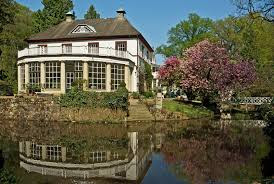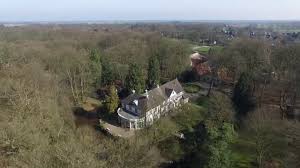Already in the twelfth century appears in the documents. However, at that time, the estate still had a real "mission" and was far from being used as a haven for warm summer days.
Gut Hodenberg was a kind of settlement outpost to secure the interior and was, according to legend, inhabited by the Hodenberg family, which was then in the service of the then Archbishop Sigfried. On April 30, 1897, trader Robert Rummers seized the property against 88,000 gold marks. He loved distant countries, painting, and was friends of low German artists. His wife Lily built an outdoor theater in the garden.
Romantic, wild garden
There are many treasures to be discovered in Gut Hodenberg: the old palace and the landscaped garden with the mysterious natural theater. Architect Christian Roselius has planned the Baroque Tavshtein cave. The 18th and 19th century garden sculptures harmonize with the garden, just like the pavilion built at the beginning of the 20th century.
Meeting place for artists
The estate was once a popular place to meet artists and merchants, who particularly praised Rickmers' wine cellar. So Albert Ritterhoff and Heinrich Vogler sat with a glass of good wine. In 1936, Rickmers converted the estate to the foundation "Der Hodenberg". Since then, he was to care for Niedersächsische Heimatliebe. This has happened since the death of Rikmors in 1948.



